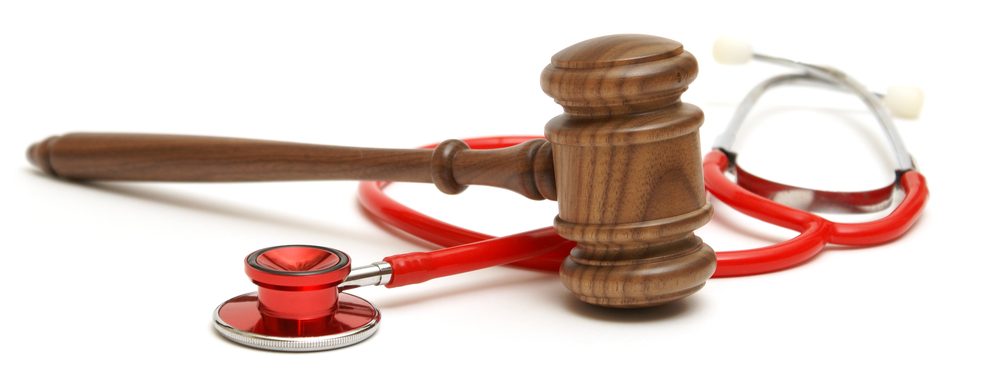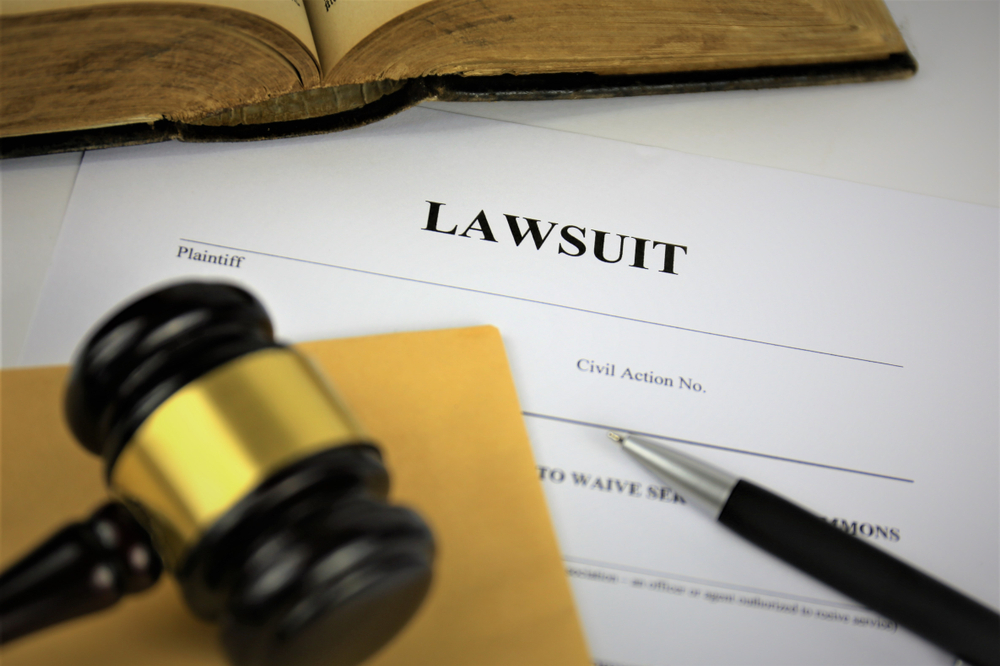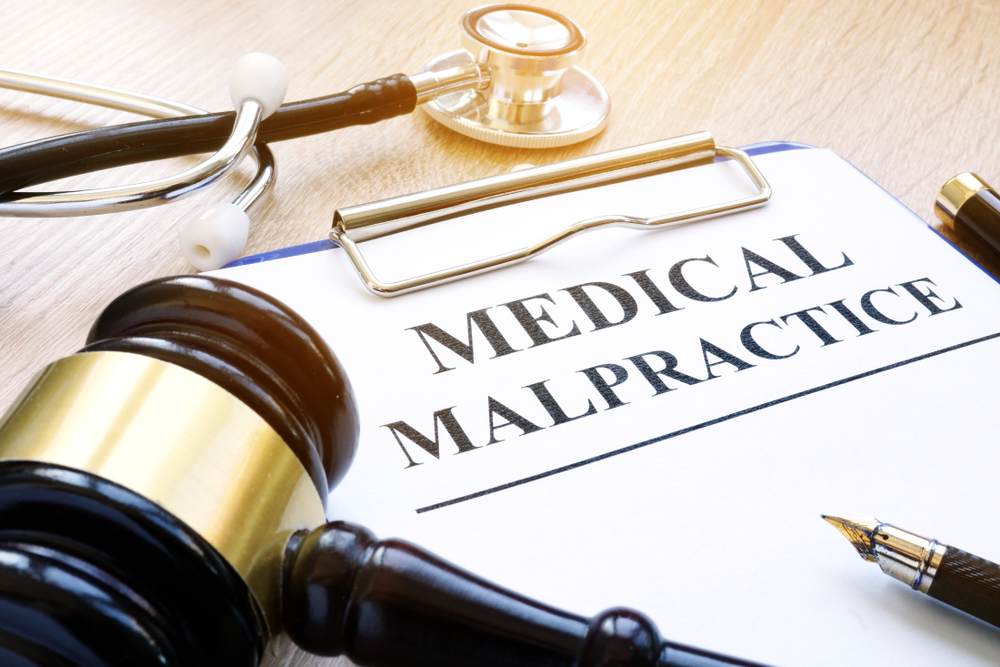If you or a loved one has developed shingles or other complications after receiving a Zostavax vaccination, you may be entitled to compensation. Over the past decade, the vaccine has been known to cause adverse side effects, while it’s only 50% effective at preventing the shingles virus. Read on to learn more about Zostavax and the lawsuits filed against Merck.
- What Is Zostavax?
- What Is Shingles?
- What Are the Symptoms of a Zostavax Complication?
- Current Major Lawsuits and Investigations
- What Should I Do If I’ve Been Affected by Zostavax?
- How Do I Know if I Qualify to Be Part of a Zostavax Lawsuit?
- How Does a Zostavax Lawsuit Work?
- How Long Does It Take to Settle a Zostavax Lawsuit
- What Is the Statute of Limitations on a Zostavax Lawsuit?
- How Much Can You Get From a Zostavax Lawsuit?
- How Long Does It Take to Get Your Money After You Settle a Lawsuit?
- Wrapping Up
What Is Zostavax?
Zostavax is a recent vaccine for the herpes zoster virus, which is commonly known as shingles. Shingles is a virus that lingers in the body after exposure to the varicella-zoster virus or chickenpox. The vaccine was produced by the pharmaceutical giant Merck and approved by the United States Food and Drug Administration (FDA) in 2006.
At the time, Zostavax was the only vaccine available for the shingles virus. This allowed Merck to monopolize the market and see profits as high as $750 million in 2016. Merck enjoyed being the sole producer of a herpes zoster vaccine until 2017, at least in the United States.
The vaccine is supposed to reduce the chances of shingles occurring in people over the age of 50. Shingles is a painful disease that typically develops in individuals over the age of 50. In fact, the older a person gets, the greater the risk becomes. This vaccine was supposed to prevent shingles but complications including shingles itself often develop within 12 months of receiving the vaccine, and it proved to be only 50% effective.
Zostavax is a unique vaccine because it’s a live vaccine. Instead of a dead virus being introduced to the body, a weakened but living virus is introduced. Because the virus is alive, people with compromised or weak immune systems are not eligible for the vaccine, as the risk of the vaccine causing shingles is too high. The Zostavax vaccine is no longer being sold as of July 1, 2020.
If you’re worried about the shingles virus, the CDC recommends a new vaccine called Shingrix, which uses a dead version of the virus. According to the CDC, Shingrix is about 90% effective at preventing the virus.
What Is Shingles?
The shingles virus, or varicella-zoster virus, is the same virus that causes chickenpox in children. Unfortunately, for people over 50, it comes back as something worse.
The shingles virus can surface on a few different parts of the body, but it often appears as a stripe of blisters on the left or right side of your torso. Shingles can also surface on the neck and near the eye. For many, it is painful chickenpox that develops in a specific location.
The symptoms of shingles are debilitating and include pain, numbness, sensitivity to touch, fluid-filled blisters, itching, and a red rash that follows a few days after pain settles in.
In severe cases, people may also suffer from intense pain, fever, fatigue, headache, and sensitivity to light. While these symptoms are uncommon, it’s essential to reach out to a doctor if symptoms worsen over time.
What Are the Symptoms of a Zostavax Complication?
The Zostavax vaccine has been around for over a decade, and recipients of the vaccine report numerous side effects and health complications. Still, everyone’s body is different, so symptoms vary on a case-by-case basis.
Shingles
One of the most common symptoms of a Zostavax complication is shingles. After receiving the Zostavax vaccine, the plaintiffs allege that shingles developed within a few weeks. Shingles is the disease that the vaccine is designed to protect against, so it’s understandable that people are ready to sue Merck.
Postherpetic Neuralgia
One serious complication that develops from shingles and the Zostavax vaccine is Postherpetic Neuralgia (PHN). PHN is a complication that attacks the body’s nervous system, causing pain and discomfort among other symptoms.
People with PHN can experience a burning sensation, sensitive, throbbing, numbness, and itching. These symptoms typically occur where the shingles virus appeared on the surface of the skin. While symptoms diminish once the rash has healed, patients report symptoms lasting for weeks or months after the rash is gone.
Aside from physical complications brought on by PHN, patients can also experience psychological symptoms. Some patients experience fatigue, depression, sleepless nights, loss of appetite, and diminished focus.
Eye Problems
There have been several lawsuits surrounding complications that led to problems with vision. One woman developed a headache only 24 hours after receiving the Zostavax vaccine in 2014. While her headaches dissipated with time, she’s still suffering from dizziness, high blood pressure, and complications in her right eye.
Other eye problems have also developed after receiving the Zostavax vaccine. Symptoms and complications include retinal necrosis, blindness, sensitivity to light, and different vision-related complications.
Spinal Cord Inflammation
One plaintiff, Norman Sukkar, developed acute transverse myelitis. The onset of his condition was within five months of receiving the vaccine. This is a serious condition that impacts the spinal cord and leads to chronic injuries, including pain, paralysis, blurred vision, and bladder problems.
While Sukkar’s case is the most well-documented, others have developed spinal issues. Inflammation is also known to occur in the lower back and near the base of the brain. These complications are severe and often lead to chronic injuries.
Current Major Lawsuits and Investigations
There have been several lawsuits involving Merck and the Zostavax vaccine. The initial case began with 22 plaintiffs but has reached over 1,000. The lawsuits have been grouped into a multidistrict litigation (MDL) in the Eastern District of Pennsylvania, under Judge Harvey Bartle.
Many complications came from the Zostavax vaccine. This means that people are entering lawsuits for different reasons, which has led to a few other prominent cases reaching the national spotlight. Below, we have a few on-going major lawsuits that serve as examples.
The New Jersey Lawsuit
One of the most prominent pending lawsuits is in the state of New Jersey. The lawsuit claims that 1,000 victims received the Zostavax vaccine to prevent shingles but ended up getting the disease within twelve months.
The type of herpes zoster they received is also more challenging to treat because it’s recurring. In New Jersey, these cases have been grouped into a multicounty litigation (MCL), which is a state-level MDL.
The lawsuit began in New Jersey because that’s where Merck is incorporated. This means that plaintiffs can avoid federal court and make their case in state court.
South Carolina and Pennsylvania
One of the first lawsuits began in South Carolina and was filed in Pennsylvania. In this case, the plaintiff developed a loss of vision diagnosed as retinal necrosis. For this lawsuit, the plaintiff alleges that Merck failed to warn the public of possible side effects and produced defective medicine.
Wisconsin
A woman in Wisconsin alleged that the Zostavax vaccine caused her to develop shingles. While the vaccine is designed to prevent it, shortly after receiving the vaccine she developed postherpetic neuralgia. This is the rash shingles causes, and she claims that she has chronic pain from the Zostavax vaccination.
Why Merck Is Being Sued
The plaintiffs and their representation claim that Merck got the balance of their vaccine wrong. With a live virus, balance is vital to make sure the body’s immune system doesn’t become overwhelmed when a virus is introduced.
According to the plaintiffs, the strain used in the Zostavax vaccine was not weak enough and exposed patients to a new strain and the old strain of the herpes zoster virus.
The lawsuit claims that Merck knew the risks and chose to distribute the vaccine regardless. Most lawsuits claim that Merck was careless in their design, labeling, testing, manufacturing, and sale of the vaccine.
What Should I Do If I’ve Been Affected by Zostavax?
If you or a loved one has received a Zostavax vaccine, you might be eligible to participate in a class-action lawsuit against Merck. It’s essential to act quickly because cases are already nearing the end of the discovery phase.
If you were diagnosed with the shingles virus within three months to twelve months of receiving the virus, or developed complications within two years, we recommend reaching out to a licensed attorney to see if you qualify. You can also fill out the form to have a licensed attorney contact you.
How Do I Know if I Qualify to Be Part of a Zostavax Lawsuit?
If you or a loved one developed shingles after receiving a Zostavax vaccine, you might be eligible to participate in a class-action lawsuit. Specifically, you would have to have developed shingles between three weeks and twelve months after receiving a Zostavax vaccination.
While shingles is one of the primary reasons to sue, there are other complications. For these complications, symptoms must have appeared within two years of vaccination for you to be eligible for a lawsuit. These are some of the other complications that make you suitable for a Zostavax lawsuit:
- Congestive heart failure
- Bell’s Palsy
- Vasculitis
- Spinal cord inflammation
- Postherpetic Neuralgia (PHN)
- Blindness
- Retinal necrosis
- Loss of hearing in one or both ears
- Guillain-Barre Syndrome
- Chronic Inflammatory Demyelinating
- Polyneuropathy
- Meniere’s Disease
- Stroke
- Loss of life
Depending on the state you live in, it’s important to act with haste. Fill out our form to have a licensed attorney reach out to you.
How Does a Zostavax Lawsuit Work?
The Zostavax lawsuit is broken into two different multidistrict and multicounty cases. A handful of cases are taking place in New Jersey, while the majority are taking place in Pennsylvania. The lawsuits are in their infancy, so here is what’s happening.
The Zostavax lawsuits are being broken down into bellwether cases of two different groups. Bellwether cases are designed to give the defendant, plaintiffs, and courts an idea of what the future will hold. This is common in mass tort cases. There are two bellwether groups set for trial in the fall of 2020: Group A and Group B.
Group A
Cases that fall under Group A include plaintiffs that developed shingles as a direct result of receiving the vaccine. People that have developed chickenpox or other shingles-related illnesses are also grouped into Group A. People suffering from recurring shingles, or postherpetic neuralgia, are also eligible.
Group B
Cases in Group B are for victims that developed complications other than shingles. For example, some plaintiffs developed spinal cord inflammation and vision loss. These cases also include people that had a stroke, congestive heart failure, and other severe complications within two years of receiving the Zostavax vaccine.
Once these cases are settled and discussed in court, it will be easier to determine what the lawsuit process will look like. Until then, it’s crucial to stay up-to-date on Zostavax trials. Fill out the form below to see if you qualify, and a licensed attorney will be able to provide you with more information.
How Long Does It Take to Settle a Zostavax Lawsuit
Zostavax trials are in their infancy. The first cases are set to take place during the fall of 2020, once the discovery phase is complete. Trials are expected to run from 2020 through 2021.
While the lawsuit is nearing the end of the discovery phase, litigation is likely a year or two away. So expect these cases to come to a close towards the end of 2021 or in the early months of 2022.
What Is the Statute of Limitations on a Zostavax Lawsuit?
The statute of limitations is the amount of time a plaintiff has to make their case. In lawsuits, there is a limit to how long you can sue after something has happened. For example, most medical cases have a statute of limitations of around two years, meaning you have two years to file a claim or you’re no longer eligible.
What makes the statute of limitations confusing is how it varies state-by-state. For this reason, you must check your state’s laws for more information. The statute of limitations for Zostavax cases is typically two years.
Still, the Zostavax lawsuit statute of limitations also depends on the legal theory being applied to the lawsuit. For each reason to sue Merck, the statute of limitations varies case-by-case. The two most popular suits are for negligence and breach of warranty.
Negligence is a claim that Merck acted unreasonably. This means the company could have withheld information, knew the risks, and intentionally caused harm. Cases of negligence typically have a statute of limitations of two years.
Breach of warranty cases has more to do with safety. For example, if Merck claimed the drug was safer than it turned out to be, that’s a breach of warranty. The statute of limitations for breach of warranty cases is typically four years.
Based on these two different lawsuits, there is a clear difference in the statute of limitations. Other components play a role in determining the statute of limitations, which are as follows:
- Design defect
- Fraudulent misrepresentation
- Unjust enrichment
- Negligent misrepresentation
It’s essential to act quickly. One case was already dismissed for breaching the statute of limitations. The plaintiff, Chris Juday, filed after the statute of limitations had passed and asserted that the vaccine led to chickenpox on his lungs. Since the suit was filed after the statute of limitations, the judge ruled against his case.
How Much Can You Get From a Zostavax Lawsuit?
Zostavax cases are still pending in court and are set for trial in the fall of 2020. It’s difficult to determine how much victims will be eligible for, but based on previous vaccination lawsuits, we’re able to provide an estimate. For example, Sarah Behie won a settlement in court for over $4.5 million in 2014.
While we can’t provide a guaranteed dollar amount, there are other ways to determine how much you might qualify for. It’s challenging to determine what will be considered in Zostavax lawsuits, but recoverable damages are a great place to start.
Recoverable Damages
When filing a lawsuit, lawyers will typically attach a list of recoverable damages. These damages refer to financial losses that a plaintiff will endure based on the negligence of the defendant. Plaintiffs can file for three types of recoverable damages: actual damages, general damages, and punitive damages.
Actual Damages
Actual damages are losses that a plaintiff will experience financially, and they have a finite dollar amount. These damages include expenses like doctor’s fees, medications, rehabilitation, physical therapy, hospitalization, lost wages, and lost benefits.
General Damages
General damages are difficult to determine because they don’t have direct, obvious monetary values. These damages include things like harms to mental health, diminished earning potential, future medical needs, pain, and diminished enjoyment in life. These vary on a case-by-case basis but can open up the possibility of additional compensation.
Punitive Damages
Punitive damages are specific damages for which plaintiffs must meet certain criteria to be eligible. For example, a patient would have to have a high burden on their life and finances. Punitive damages adhere to different guidelines based on your state.
These damages add up whenever it’s determined that companies acted irresponsibly with harmful results. The Zostavax vaccine has led to severe unneccesary complications, so if you’ve been impacted there is a good chance that you won’t need to foot the bill for your suffering.
How Long Does It Take to Get Your Money After You Settle a Lawsuit?
When a lawsuit settles, be it in court or out of court, money doesn’t come overnight. This is true for smaller lawsuits and class action lawsuits. The amount of time it takes to receive funds depends on a few factors.
1. Paying the Victim’s Expenses
First and foremost, the defendant must cover any expenses incurred by the victims. This is money that most victims won’t see in cash because it goes to medical bills, prescriptions, in-home care, and visits to the hospital. For Zostavax lawsuits, this will be the first order of business.
2. Paying Legal Fees
Once expenses are paid, victims must cover any legal fees. These are fees that come with having a legal defense and go to your lawyer or law firm.
If you’re participating in a class-action lawsuit, most law firms have an agreed-upon percentage. To find out more about how much lawyers receive as compensation, fill out the form below to have one reach out to you.
3. Victim Compensation Payout
Once legal fees and expenses are covered, victims can receive their payment. Payment is typically distributed as a check, and it comes from the law firm. Once a case is settled, the defendant pays the law firm, the law firm deducts their fee and then writes you a check. In nine out of ten cases, this is what you can expect.
Still, you do have the ability to choose a different payment method if you need to. If you have special payment requirements, they need to be discussed with an attorney or law firm early on in the case.
Wrapping Up
Zostavax lawsuits are a recent development that are never fully straightforward so it’s important to seek legal counsel if you or a loved one has been affected by the drug. Take some time to look over the symptoms and complications to determine whether or not you’re eligible to participate in a class-action lawsuit.
If you’ve been impacted, fill out our form to have a licensed attorney reach out to you. It doesn’t hurt to try, especially when it’s your health on the line.



